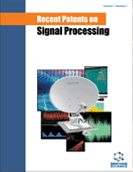Abstract
Although one can find several patents addressing surgery procedures to tackle ophthalmological diseases, it is very unusual to find other ones that apply machine learning techniques to automatically identify them. In this paper we addressed the problem of ophthalmological disease identification as a first step of an expert diagnosis system using five state-of-the-art supervised pattern recognition techniques: Optimum-Path Forest, Support Vector Machines, Artificial Neural Networks using Multilayer Perceptrons, Self Organizing Maps and a Bayesian classifier. Two rounds of experiments were accomplished in order to assess the performance of the classifiers with fixed and varied training set size percentages. The results indicated that Support Vector Machines and Self Organizing Maps were the most accurate classifiers, and OPF the fastest one considering the overall execution time.
Keywords: Machine learning, supervised classification, ophthalmological diseases, ophthalmology, Neural Networks, Bayesian Classifier, Artificial Neural Networks, parameter optimization, Robustness, Pattern classification, kernels, Ophthalmic applicator, Hybrid Intelligent Systems, Image Processing, signal Processing
 12
12

